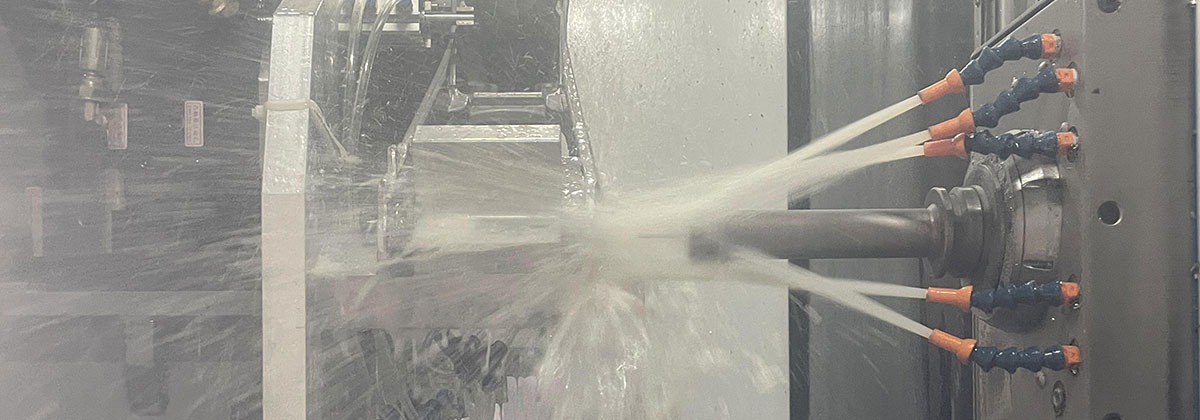Aluminum casting is a widely used manufacturing process in which molten aluminum is poured into a mold cavity to create a desired shape. The aluminum casting machine plays a crucial role in this process, as it ensures the efficient and precise production of aluminum castings. In this article, we will provide an introduction to the process and applications of the aluminum casting machine.
Process of Aluminum Casting:
1. Pattern Making: The first step in aluminum casting is the creation of a pattern, which is an exact replica of the final product. The pattern is typically made from wood, plastic, or metal and is used to create the mold.
2. Mold Making: Once the pattern is ready, a mold is created around it. The mold is made from a special type of sand that can withstand the high temperatures of molten aluminum. The mold is divided into two halves, the cope, and the drag.
3. Core Making: In some cases, the mold requires a core to create internal cavities or complex shapes in the casting. Cores are made from sand or metal and are placed inside the mold before pouring the molten aluminum.
4. Melting and Pouring: The aluminum casting machine is responsible for melting the aluminum and pouring it into the mold. The machine typically uses a crucible, which is a container made from refractory materials that can withstand high temperatures. The molten aluminum is poured into the crucible, and then the machine tilts or moves the crucible to pour the metal into the mold.
5. Cooling and Solidification: Once the molten aluminum is poured into the mold, it starts to cool and solidify. The cooling time depends on the size and complexity of the casting. After the casting has cooled, it is removed from the mold.
6. Finishing: After the casting is removed from the mold, it may require various finishing processes such as trimming, grinding, sandblasting, or machining to achieve the final desired shape and surface finish.
Applications of Aluminum Casting Machine:
1. Automotive Industry: Aluminum castings are widely used in the automotive industry due to their lightweight and excellent strength-to-weight ratio. The aluminum casting machine is used to produce various automotive components such as engine blocks, cylinder heads, transmission cases, and suspension parts.
2. Aerospace Industry: The aerospace industry also utilizes aluminum castings extensively. The lightweight and corrosion-resistant properties of aluminum make it an ideal material for aircraft components. The casting machine is used to manufacture parts such as turbine blades, aircraft frames, wing components, and landing gear.
3. Electrical Industry: Aluminum castings are commonly used in the electrical industry for the production of components such as electrical housings, connectors, and heat sinks. The casting machine ensures precise production and high-quality castings, which are crucial for the reliable functioning of electrical equipment.

4. Construction Industry: The construction industry utilizes aluminum castings for various applications such as window frames, door frames, and structural components. The casting machine allows for the production of complex shapes and designs, making aluminum an ideal choice for architectural applications.
5. Consumer Goods: Aluminum castings are also used in the production of consumer goods such as cookware, furniture, and decorative items. The casting machine enables the efficient mass production of these items, meeting the demand for high-quality and aesthetically pleasing products.
The aluminum casting machine is a vital tool in the process of manufacturing aluminum castings. It enables the efficient production of complex shapes and designs, making aluminum a versatile material used in various industries such as automotive, aerospace, electrical, construction, and consumer goods. By understanding the process and applications of the aluminum casting machine, manufacturers can unlock the potential of aluminum casting for their products.
-

- Custom-made thixomolding parts UAV components with CNC machining &surface treatment
-

- parts&comopnents for bicycle suspension fork for MTB
-

- Mangensium alloy die-casting Thixomolding metal parts
-

- Magnesium alloy thixomolding components
-

- Mangensium alloy die-casting Thixomolding metal parts
-

- Magnesium Aluminum Alloy Children Bike 3-8 Years Old Cheap Hot Sale 14 Inch Children Bicycle FOREVER Wholesale 2022

 0086-750-5616188
0086-750-5616188 +86 13392089688
+86 13392089688 sales@zhongmei-tech.com
sales@zhongmei-tech.com






